In case you want to know which way it is to the center of the Milky Way Galaxy, look at Venus in the southwest just after sunset on November 1. It’s almost in our line of sight to the galactic center. The planet is about five minutes, 21 seconds of light time from us. It appears about 2° north of Sagittarius A, the radio source star close to the galactic center about 26,000 light years distant.
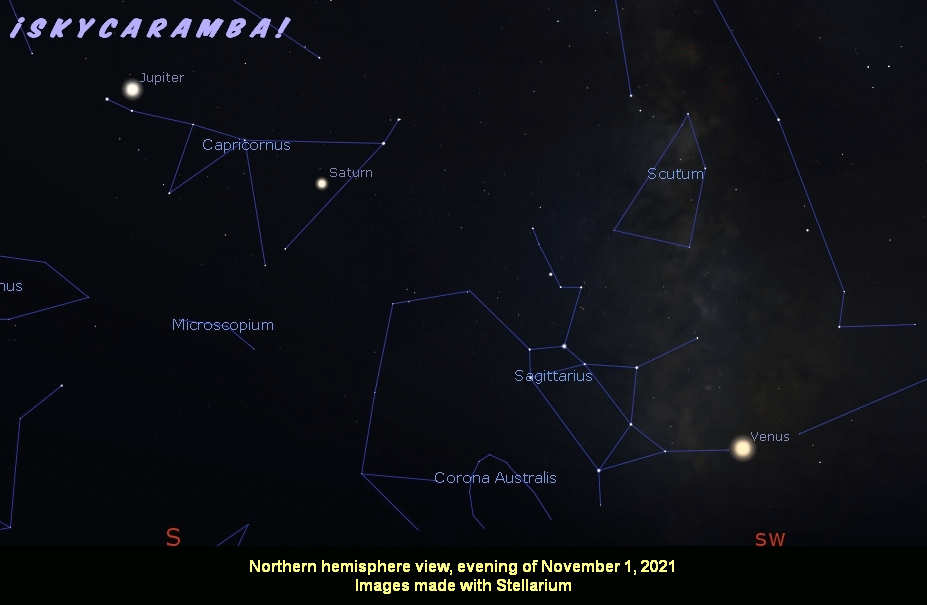
Venus scoots north of Alnasl in the first week of the month. A young moon is ready to pass the planet on the 7th. And on the 8th, it has. On the evening of the 11th, the love goddess planet is between two of the archer’s bow stars, Kaus Borealis and Kaus Media, respectively the northern and middle bow stars. The planet is already passing close by Namalsadira I—about 0.25° away—on the 16th. And if that’s not impressive enough, see Venus even closer to Nunki three evenings later! Separation will be 0.2°. Think of the close call—0.4°–with Al Kiladah on the 25th as a sort of encore.
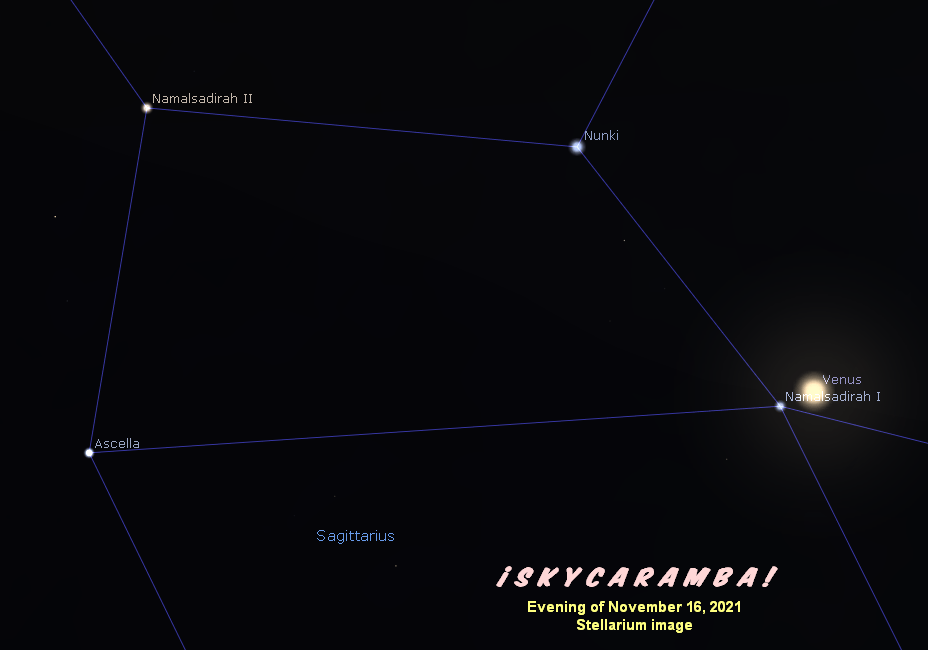
As the month ends, Venus is clearly done traversing the teapot. By that time, you’ll see that it’s getting close to Jupiter and Saturn which are still hanging out in Capricornus. Saturn is moving eastward in the western part of the constellation this month. Jupiter spends the first half of November in an acute triangle with Deneb Algedi and Nashira. It’s a right triangle on the 16th as the planet moves eastward. Jupiter remaining in direct motion, the triangle is obtuse the rest of the month. While these movements happen, see the approximately first quarter moon near Saturn on the 10th and Jupiter on the 11th.
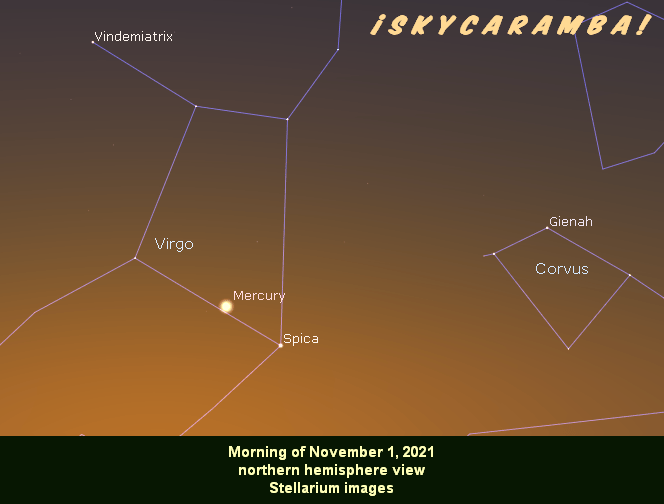
Mercury is a morning object as November starts. See an aging crescent moon high above it in the east before sunrise on the 1st, closer on the second, and closest to the moon on the 3rd. The messenger planet is close to Spica. Heading quickly eastward and sunward, Mercury closes in on Mars a week later, passing by the star Kang on the 8th. The two planets will be 1° apart on the 10th. Both are moving eastward. And neither is going to be easy to see. A clear horizon and a clear sky are a must. You may need binoculars or a telescope to see them. Mercury is headed for superior conjunction on the 28th.
Lost in the morning light is an even closer appearance of Mars and a dim star named Khambaliya. Heading into Libra, Mars will be even closer to Zubenelgenubi on the 22nd. There will be enough darkness for barely long enough to see them very close to the horizon. Mars is in the middle of the Libra diamond at month’s end.

Ceres, long famous as the first discovered asteroid, crosses the V that is the Hyades. It’s considered a dwarf planet now, but that doesn’t take away from the joy of seeing it and this month provides excellent opportunities. Ceres will be 0.1° from Aldebaran on the 3rd. It’ll take until about the 20th to cross the other leg of the V. It’s at opposition on the 27th. That’s close to the time when it’s closest to Earth, so it will be at its brightest. It may be as bright as magnitude 7.0, a binocular object, at that time. There are many stars visible in the Hyades in binoculars. Look each night this month and see which dot has moved among them. (This paragraph has been edited to correct the dates of Ceres’ closeness to Aldebaran and passage through the other side of the Hyades V. I regret the errors.)
Imagine being one of the people who saw this object four centuries ago and couldn’t figure out what it is. It’s like a star in that it’s merely a point of light in a telescope. And it’s like a planet in that it moves among the stars. The words asteroid and planetoid were coined to describe it. But even those words didn’t describe Ceres well after astronomers learned more about it. It’s round like a planet but not massive enough to pull in and fling away lots of other objects near it. So it’s called a dwarf planet now.


Uranus is also at opposition this month. That will be on the 4th. Orbiting farther from the sun than Ceres, its movement is slower. It doesn’t happen to be near any bright stars lately, so viewing it will be more of a challenge.
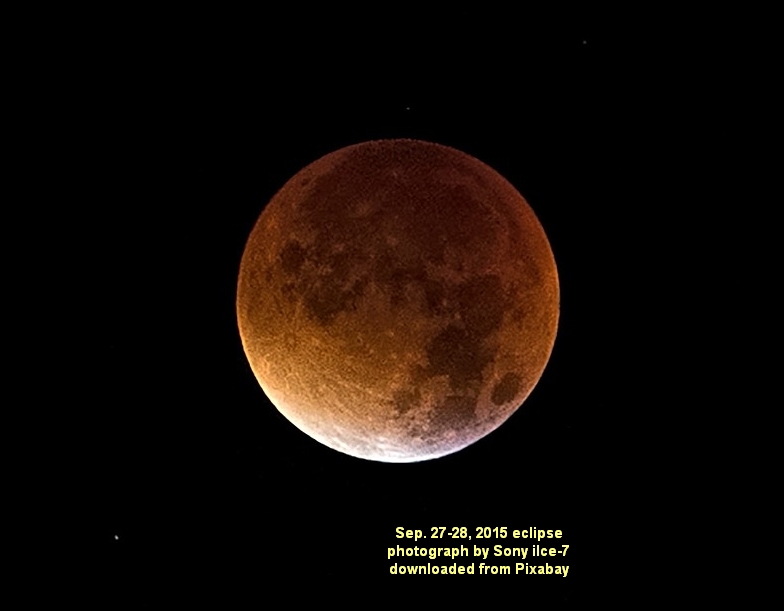
For many people, the highlight of the month is going to be the nearly total lunar eclipse. During the event on the 19th, 97% of the moon’s disk will be in the darkest part of Earth’s shadow. In other words, 97% of what should be the directly lit side of the moon will get the reddish, filtered, and scattered light that passes through Earth’s atmosphere. The remaining 3% will get sunight partially blocked by Earth. Visibility is from nearly all of North America, most of the Pacific, and far northeast Asia for the entire event. South America and much of the Atlantic get an eclipse at moonset. It’s a moonrise event for most of Asia and Australia.
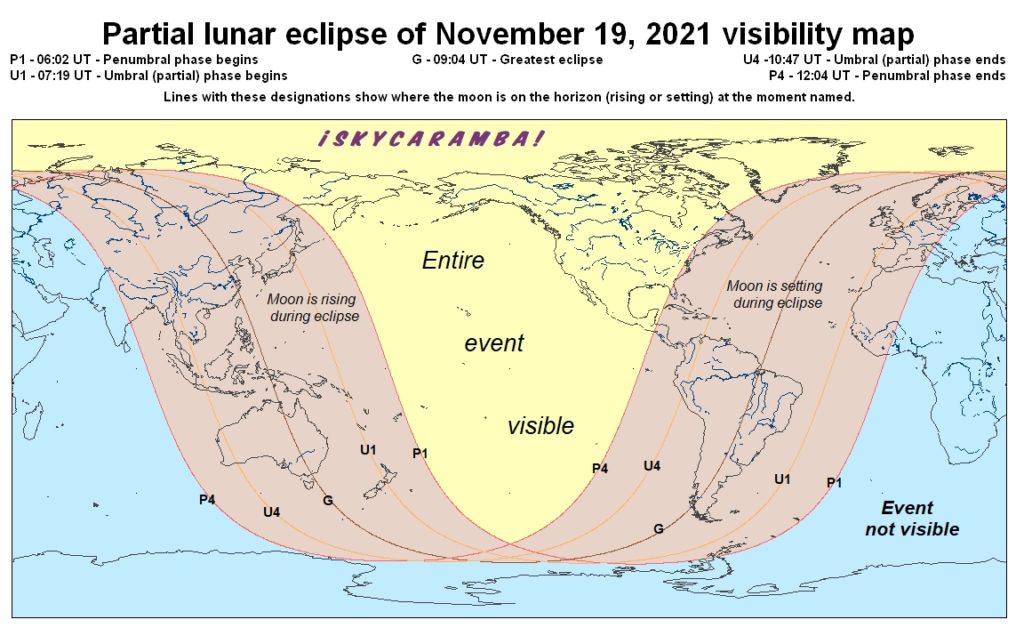
The Leonids meteor shower peaks on the 17th and 18th. The moon is nearly full though. Easier viewing could be earlier in the month. The shower has a broad enough peak for a few meteors to show up a week or two before.


The moon’s circumstances this month: It goes south of the equator on the 2nd. New moon is on the 4th. Southern lunistice at 26.3° is on the 8th, first quarter is on the 11th, and the moon goes north of the equator on the 15th. Full moon and the eclipse are on the 19th. The moon’s farthest north at 26.3° on the 22nd. Last quarter is on the 27th. And it goes south of the equator again on the 30th. Lunar perigee is on the 5th at 358,900 km. Apogee is on the 21st at 406,300 km.
